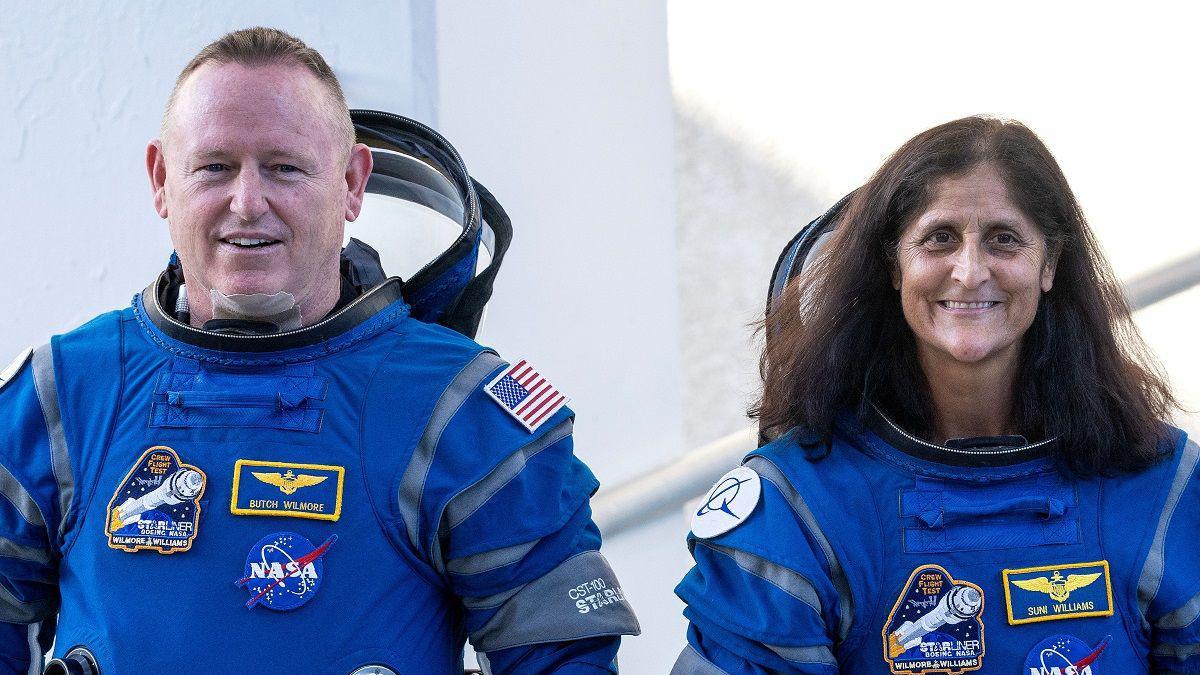When two American astronauts launched on a test mission to the International Space Station on June 5, they expected to be back home within days.
But things did not go as planned.
In fact, Barry “Butch” Wilmore and Sunita Williams are still there, floating high above the Earth nearly two months later.
The couple, who are stuck indefinitely, now face the sudden prospect of missing the summer entirely and even spending Christmas and New Year in space.
Wilmore, 61, and Williams, 58, flew on the Boeing Starliner spacecraft to the International Space Station (ISS).
It was the first flight of its kind with people on board and was a test designed to see how the new spacecraft works before it is used more regularly.
However, during the approach, problems arose, including leaks in the propulsion system and the shutdown of some of its thrusters.
So even though they arrived at the space station safely, they will need an alternative mode of transportation to get home if the Starliner is not deemed fit to return them to Earth.

At a news conference on Wednesday, NASA officials said no firm decisions had been made on next steps.
“Our primary option is for Butch and Suni to return on Starliner,” said Steve Stich of NASA’s Commercial Crew Program.
“However, we have done the necessary planning to ensure that we have other options open.”

One possibility being considered, they said, is to bring back astronauts when a mission scheduled to launch in September returns to Earth. Wilmore and Williams would join the crew and return in February 2025.
That trip to the space station will be made on a SpaceX Crew Dragon spacecraft. The initial plan was for four crew members to be on board, but two of the seats could be left empty if necessary.
That plan would mean astronauts would spend more than eight months, instead of the original eight days, aboard the International Space Station (ISS).
If Crew Dragon is used, the Starliner spacecraft would return to Earth uncrewed, under computer control.
NASA officials said it could take a week or more to make a final decision.
Blow to Boeing
Ken Bowersox, NASA’s director of space operations, told reporters that the chances of an uncrewed Starliner return “have increased a little bit based on how things have been going over the last week or two.”
“That’s why we’re looking more closely at that option to make sure we can handle it,” he added.
Using a SpaceX spacecraft to return astronauts would be a blow to Boeing, which has been trying for years to compete with the company and its more experienced Crew Dragon.
Earlier this week, NASA used a SpaceX rocket to send more food and supplies to the ISS, including additional clothing for the two astronauts.
At a brief press conference last month, both men said they were “absolutely confident” about the return trip and that Starliner was “really impressive.”

This is the third stint aboard the ISS for Williams, a retired Navy helicopter pilot, while Wilmore is a former fighter pilot who has been to space twice before.
“We’ve been very busy up here, integrated directly into the crew,” Williams told reporters during a recent briefing call.
“It feels like coming home. It feels good to float. It feels good to be in space and working up here with the International Space Station team,” she said. “So yeah, it’s great to be up here.”
Boeing had hoped the first Starliner mission would pave the way for regular use of its capsule for round-trip missions to the station. The Space X Crew Dragon has been approved for NASA missions since 2020.
They are not the first
Although astronauts will spend much more time in space than they initially planned, others have spent much longer periods orbiting the Earth.
Russian Valeri Polyakov spent 437 days in space aboard the Mir space station in the mid-1990s.
Last year, Frank Rubio returned from the ISS after 371 days, the longest time an American has spent in space.
And Russian Oleg Kononenko, also currently aboard the ISS, is the first person to have spent more than 1,000 days in space over the course of his career.
In their reports and interviews, the two Americans have been optimistic about their situation. “I’m not complaining that we’re here for a couple more weeks,” Williams said last month.
As things stand, it is possible that both will remain there for many more weeks.
Continue reading:
* They lived in space and revealed the worst part of their experience: “It is very difficult”
* Former Olympic athlete could be the first disabled person to travel to space
* NASA astronauts lose tool bag during spacewalk

Click here to read more stories from BBC News Mundo.
You can also follow us on YouTube, Instagram, TikTokX, Facebook and in our new WhatsApp channelwhere you’ll find breaking news and our best content.
And remember that you can receive notifications in our app. Download the latest version and activate them.
- “A 400-ton object falling from the sky”: what the brutal end of the International Space Station will be like
- Spectacular images of the International Space Station traveling in front of the Sun
- HAL 9000, the disturbing computer from the movie “2001: A Space Odyssey” that predicted today’s concerns about AI
